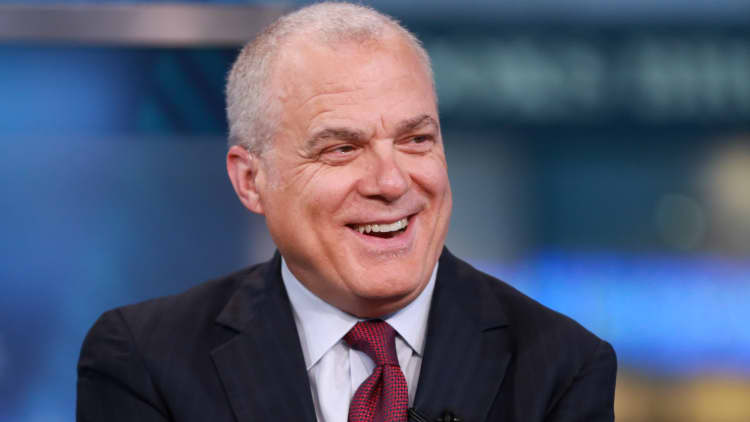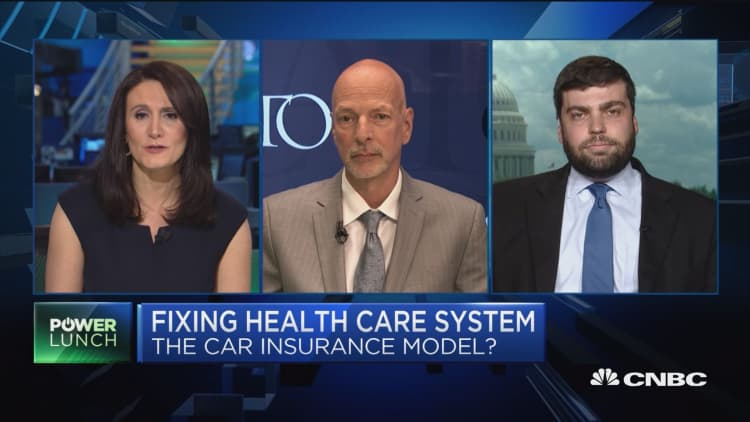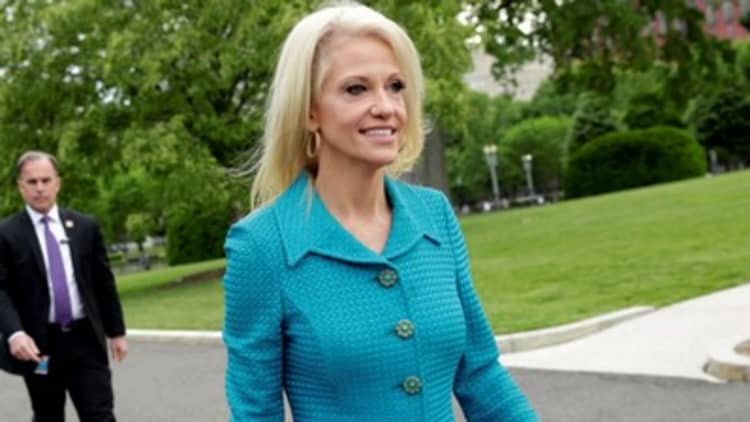It is shaping up to be another year of double-digit premium increases for Obamacare health insurance plans, but this time insurers are clearly spelling out who's to blame for their sky-high 2018 rate requests.
"In most of the country, the market would be stable if not for significant uncertainty about what the (President Donald) Trump administration will do," said Larry Levitt, senior vice president of the Kaiser Family Foundation.
The Trump administration is now holding all the cards, when it comes to making this year's open enrollment go smoothly, after Republicans in the Congress failed to pass a plan to replace Obamacare. And so far, the health department and the White House are playing it close to the vest.
"Virtually every insurer cites policy uncertainty as a factor in premium increases, and where insurers quantify the uncertainty it's often upwards of half the premium increase," he said.
The administration countered that double-digit increases are not new when it comes to annual Obamacare premium prices, and that the problem is the Affordable Care Act itself.
"Last year alone, Obamacare premiums surged by 25 percent and 83 insurers abandoned the exchanges. Since Obamacare went into effect under the previous administration, skyrocketing healthcare costs and fewer choices have become the norm," said Alleigh Marré, national spokeswoman for the Department of Health and Human Services. "This analysis confirms what we already knew — Obamacare is flawed, failing, and harming the American people. "
The insurers, however, have outlined three key factors that are driving rate increases for next year, according to an analysis of initial 2018 rate filings in the top 21 insurance markets by researchers at the Kaiser Family Foundation.
Here's how the uncertainty is adding up to higher prices:
No Cost Sharing Reduction (CSR) subsidies: 13 to 20 percent
Insurers still don't know whether the Trump administration will pay for cost-sharing reduction subsidies; payments which insurers are required to make under the current law to lower out-of-pocket costs for some 7 million low-cost exchange enrollees.

Trump has repeatedly threatened to stop reimbursing the carriers for CSRs, so they have priced in increases of up to 20 percent to make up for the potential loss. In California, officials will allow insurers to add a 12.8 percent rate surcharge if the CSRs are stopped before or during the year.
Ignoring the individual mandate: 2.5 to 23 percent
Some insurers don't see much of an impact on the enrollment, if the Trump administration stops enforcing the individual mandate to buy insurance. Others see weak enforcement as a small risk factor, but their calculations vary widely.
In Oregon, Moda Health priced in a 1.2 percent increase for the mandate, while rival Bridgespan added 11 percent to its request.
But in a few more balanced markets, like Providence, Rhode island, insurers don't seem worried about it; unsubsidized premiums in Providence are actually set to drop 5 percent next year.
Health Insurance Tax: 3 percent
The Obamacare tax on private health insurance is set to return next year, after a one-year reprieve. That could add 3 percent to prices, but not just for exchange plans. The tax also impacts employer, Medicaid and Medicare Advantage health plans.
Medicare Advantage enrollees could see premiums increase by $245 for a individual, nearly $500 for a couple, according and an analysis by actuarial consulting firm Oliver Wymen.
Tax credits would go up too
The rate increases will hit the hardest those people who earn too much for subsidies. In Wilmington, Delaware a 40-year-old non-smoker could see premiums on a silver plan jump from $423 a month to $631, according to Kaiser researchers.
But more than 80 percent of exchange plan enrollees who qualify for premium tax credits likely won't feel the impact of the price increases, because their credits are pegged to insurance prices.

Kaiser calculates that enrollees on benchmark silver plans could see their net premiums cost actually decrease by 3 percent because of the bigger credits. That's assuming more insurers don't pull out of the exchanges in the next few weeks.
States frustrated
With the start of the 2018 open enrollment less than three months away, state regulators are worried. Like insurers they're pointing fingers at Trump's health department officials for not providing guidance about how the administration intends to run the exchanges next year.
The head of the Nevada's exchange laid bare her frustration in an enrollment update, following Anthem's announcement this week that it is pulling out of the state's marketplace due to uncertainty.
"My colleagues from other State Based Marketplaces … and I have collectively and individually requested information from the Centers from Medicare and Medicaid (CMS)," said Heather Korbulic, executive director of Nevada Health Link, in the statement.
Nevada is one of five states that runs its own exchange on the federal healthcare.gov site, for a fee.

"I have yet to receive any answers to my questions, or indication as to when we will receive answers; which is particularly frustrating considering the Exchange is set to spend over five million dollars to lease HealthCare.gov," Korbulic said.
Some members of the House and the Senate are pushing to pass a temporary funding bill to keep the exchanges afloat for next year, but by the time they come back from the August break it may be too late.
Insurers have to submit their final rate requests next week, though they don't have to commit to signing contracts for 2018 until September 27.
It's not clear if the White House has an 11th hour plan in mind to reduce the current uncertainty.
"I've given up predicting what's going to happen," said Levitt. "It's hard to imagine this all getting settled within a week."
In response to questions about when states and insurers would be given more guidance about 2018 enrollment, HHS spokeswoman Marré stressed in a statement that the administration's focus is repeal.
"Inaction is not an option. The Trump Administration is committed to repealing and replacing Obamacare," she said, "and will always be focused on putting patients, families, and doctors, not Washington, in charge of healthcare."


